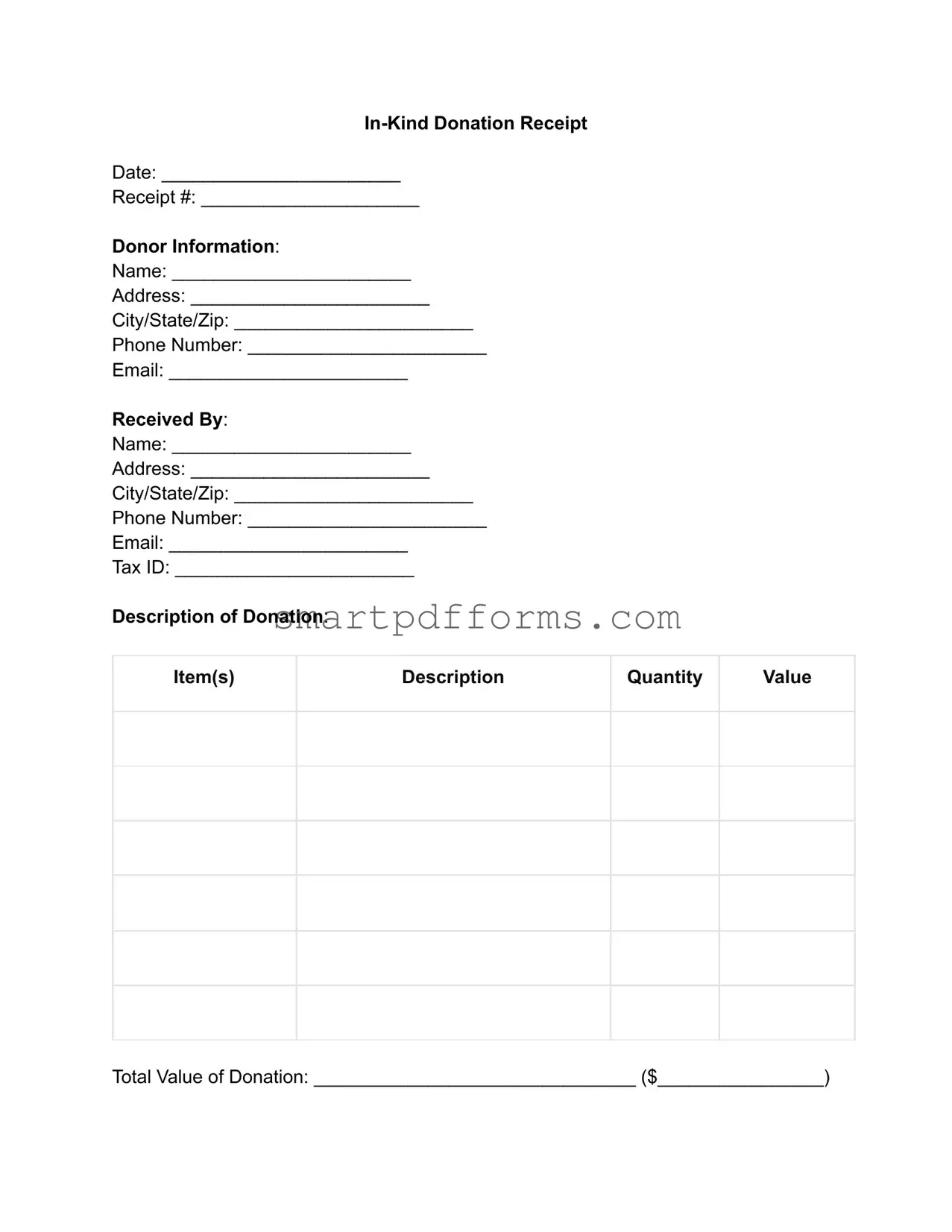Blank In-Kind Donation Receipt PDF Template
An In-Kind Donation Receipt Form is a document that officially acknowledges the receipt of goods or services donated to a nonprofit organization, rather than cash. It details the specifics of what was donated, providing a record for both the donor and the recipient. For those who've generously donated in-kind gifts, completing this form ensures your contribution is recognized; click the button below to fill out your form today.
Make This Document Now

